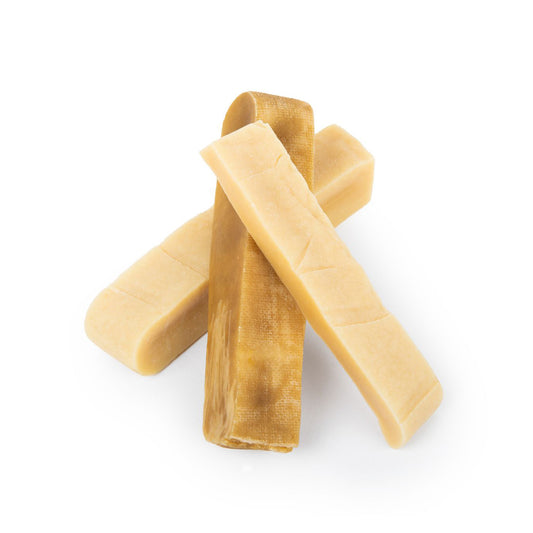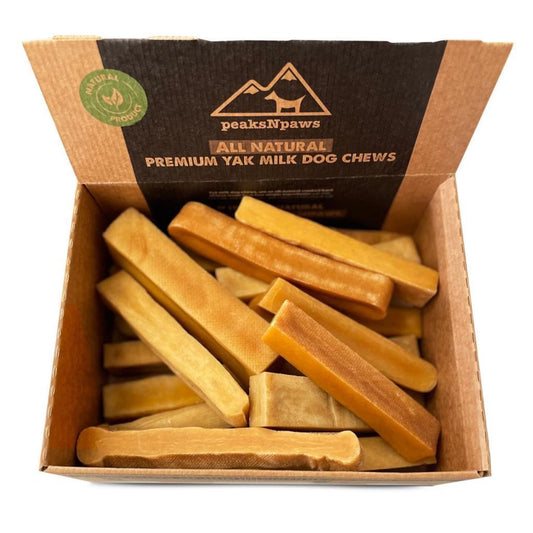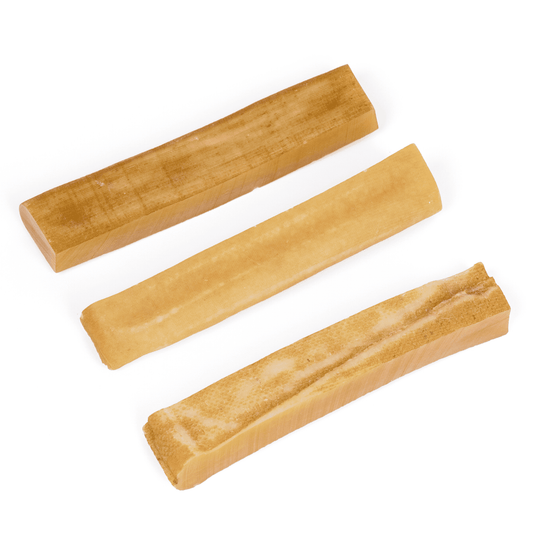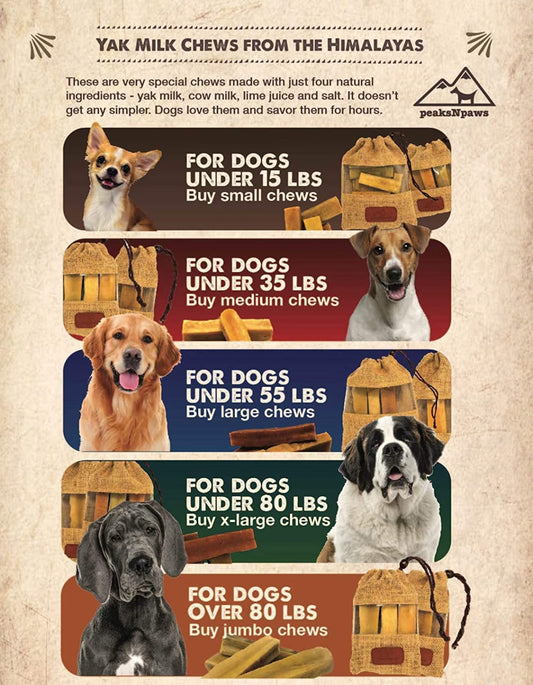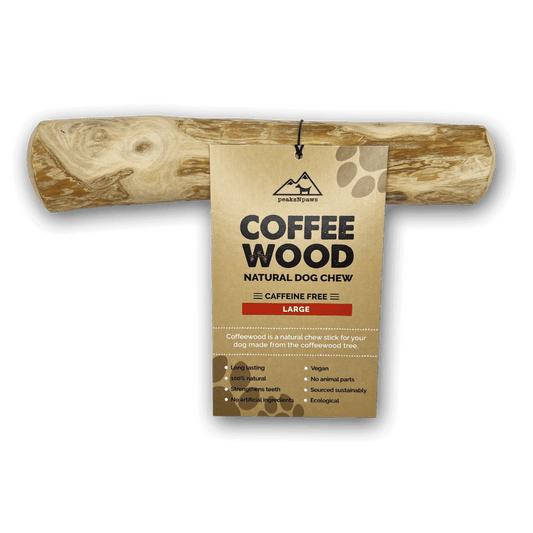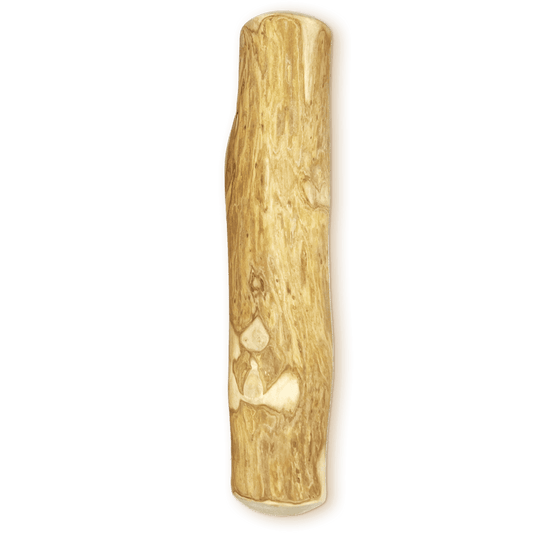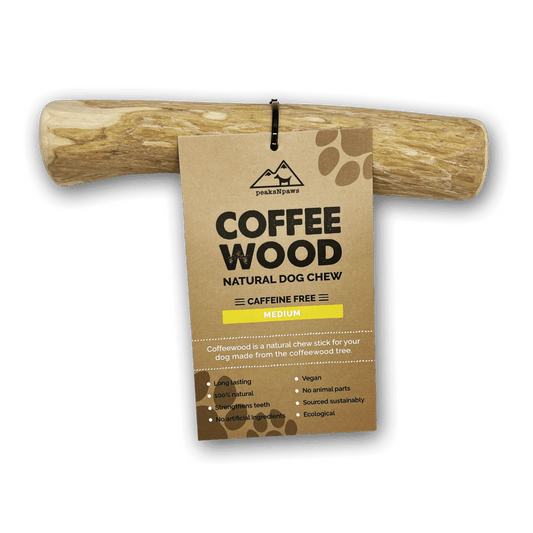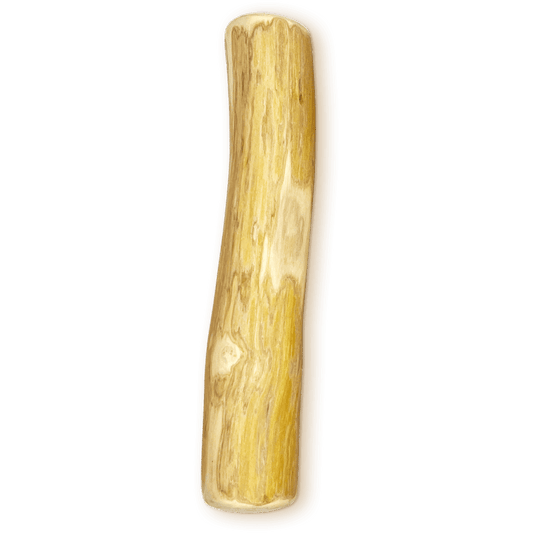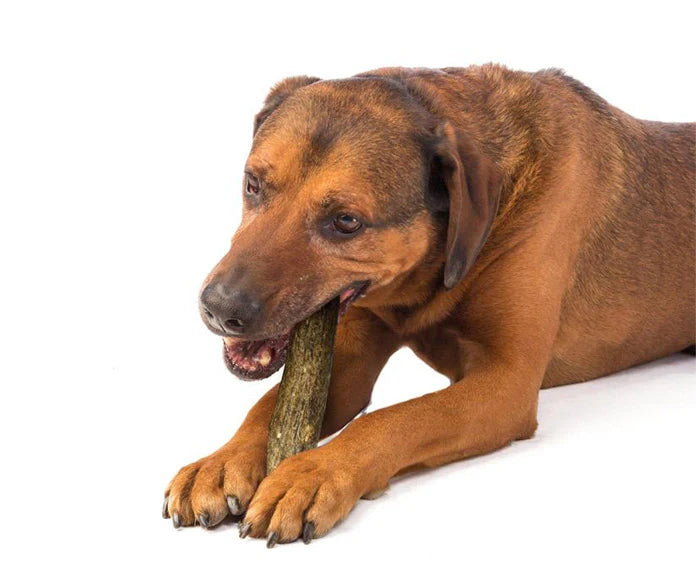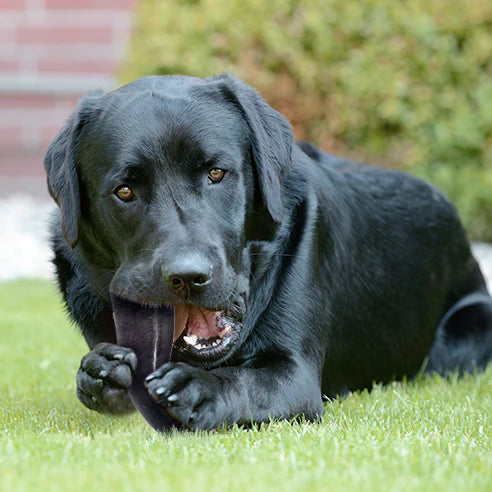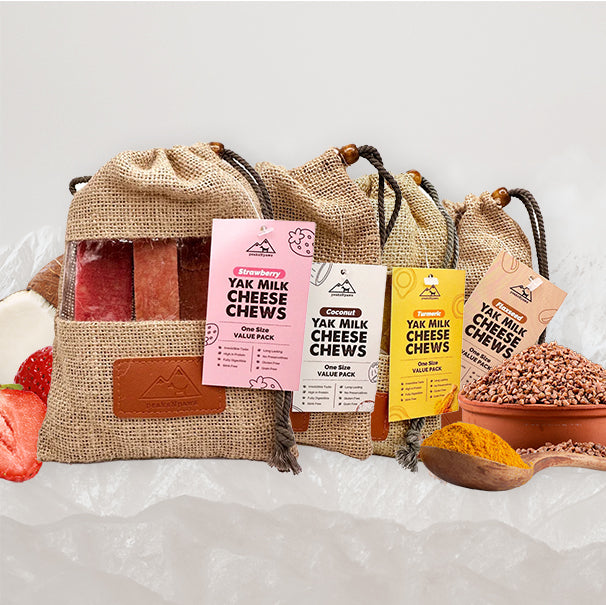
Welcome to the world of pet parenting, where every wag of a tail and every slobbery kiss is a moment to be cherished. At peaksNpaws, we believe that our four-legged companions deserve nothing but the best, and that's why we're here to enlighten you about a truly exceptional treat for your furry friend: Bully Sticks.
Whether you're a seasoned pet owner or embarking on a new journey with a playful pup, you might have heard the buzz surrounding these chewy delights. But what exactly are Bully Sticks, and why should they be on your pet's wish list? Well, prepare to be amazed as we delve into everything you need to know about these canine delicacies.
So, grab a cup of tea, sit back, and let us guide you through the fascinating world of Bully Sticks. From understanding their origin to uncovering the many benefits they offer, we'll leave no bone unturned. We'll even share some insightful tips on choosing the perfect Bully Stick for your furry friend, ensuring their tail-wagging happiness and your peace of mind.
At PeaksNPaws, we believe in providing you with the knowledge and tools to make informed decisions for your pet's well-being. With our expertise and your love for your furry companion, together, we can create a life full of joy, health, and boundless adventures.
So, let's embark on this delightful journey and discover if Bully Sticks are the ultimate canine companion for your beloved pet. Get ready to unleash happiness, one chew at a time!
Let’s begin with the question that may be lingering in your mind
Are bully sticks bull penises?
Yes, bully sticks are indeed made from bull penises. If you don’t want to opt for products that are made from animal organs, especially body parts that the animals don’t shed on their own, check out the best alternatives to bully sticks.
What are bully sticks?
Bully sticks are a type of dog treat or chew made from the pizzle (penis) of a bull. They are also known as beef pizzles or bull pizzles. Despite their origins, bully sticks are considered a natural and healthy option for dogs to chew on.
Bully sticks are typically sourced from grass-fed cattle and are processed to remove any moisture. They are then shaped into a long, tubular form resembling a stick. The drying process makes them hard and durable, providing a satisfying and long-lasting chew for dogs.
It's important to note that while bully sticks are generally safe and healthy for dogs, they should be given in moderation. They are high in protein and calories, so excessive consumption can lead to weight gain. As with any dog treat or chew, it's advisable to supervise your dog while they enjoy a bully stick to prevent any potential hazards or choking risks.
What are the benefits of bully sticks?
Firstly, bully sticks provide dogs with a joyous and sensorial experience. Their sturdy texture and natural scent stimulate a dog's innate desire to chew, granting them a pleasurable and engaging pastime. This sensorial engagement can help alleviate boredom, reduce anxiety, and promote a sense of contentment in our dear companions.
Furthermore, bully sticks offer exceptional dental benefits. As dogs gnaw on these delectable treats, the mechanical action helps remove plaque and tartar buildup from their teeth. This gentle abrasion aids in maintaining good oral hygiene, promoting fresh breath, and preventing periodontal disease. A dazzling smile for our cherished canines, indeed!
Moreover, bully sticks provide an intuitive outlet for our furry friends to satiate their natural chewing instincts. This constructive chewing behavior not only helps strengthen jaw muscles but also assists in the release of pent-up energy. By offering a long-lasting and enjoyable chewing experience, these sticks contribute to the overall well-being and mental stimulation of our canine companions.
In addition, the benefits of bully sticks extend to the nutritional realm. These treats are often sourced from high-quality, grass-fed cattle, ensuring a rich protein content. However, it is important to consider portion control, as bully sticks can be calorie-dense. Moderation is the key to a well-balanced canine diet.
What are the different types of bully sticks?
When it comes to bully sticks, there are a few different types available to cater to the preferences and needs of different dogs. Here are the main variations you may come across:
Standard Bully Sticks
These are the traditional and most common types of bully sticks. They are made from the pizzle of a bull, processed, and dried to create a hard, long-lasting chew.
Thick Bully Sticks
As the name suggests, these bully sticks are thicker in diameter compared to standard ones. They provide a more substantial and longer-lasting chewing experience, making them suitable for larger dogs or dogs with strong jaws.
Odor-Free Bully Sticks
Some dogs and their owners may find the natural odor of bully sticks to be strong or unpleasant. Odor-free bully sticks are specially processed to reduce or eliminate the odor while retaining the chewy and flavorful nature of the treat.
Braided Bully Sticks
These bully sticks are formed by braiding or twisting multiple sticks together. The braided design adds durability and complexity, making them last even longer and providing more chewing challenges for dogs.
Curly Bully Sticks
Curly bully sticks are created by twisting the penis before drying. The resulting shape is a curly or spiral form, which adds a unique visual appeal and a different texture for dogs to enjoy.
Junior Bully Sticks
Junior bully sticks are typically shorter in length compared to standard ones, making them suitable for smaller breeds or puppies. They still offer the same benefits as regular bully sticks but in a more size-appropriate package.
These variations allow pet owners to choose bully sticks that best match their dog's size, chewing preferences, and dietary needs. It's always a good idea to consider your dog's individual characteristics and consult with your veterinarian to determine the most suitable type of bully stick for your furry friend.
How to choose the right bully stick for your dog or puppy?
Choosing the right bully stick for your dog or puppy requires considering various factors, including their size, age, chewing habits, and dietary needs. Here are some guidelines to help you make an informed decision:
Size and Age
Consider the size of your dog or puppy when selecting a bully stick. For larger breeds or adult dogs, standard or thick bully sticks are usually suitable. For smaller breeds or puppies, junior bully sticks or thinner options may be more appropriate. Choosing the right size ensures a safe and comfortable chewing experience.
Chewing Habits
Take note of your dog's chewing habits. If they are aggressive chewers with strong jaws, thicker or braided bully sticks can provide a more durable chew. For lighter chewers, standard bully sticks may suffice. Observing your dog's chewing behavior can help you determine the best option for their individual needs.
Dietary Considerations
Bully sticks are generally a high-protein treat. If your dog has specific dietary restrictions or sensitivities, it's important to choose bully sticks that align with their dietary requirements. Look for options made from high-quality, natural ingredients, and avoid bully sticks with added preservatives, fillers, or artificial additives.
Odor Preferences
Some dogs and owners may find the natural odor of bully sticks strong or unpleasant. In such cases, you can consider alternative chews like Himalayan yak chews. This can make the chewing experience more enjoyable for both dogs and humans.
Health and Safety
Prioritize the health and safety of your dog. Ensure the bully sticks you choose are sourced from reputable manufacturers that follow quality and safety standards. Avoid bully sticks that are treated with chemicals or have sharp edges that could potentially harm your dog. Always supervise your dog while they chew on bully sticks to prevent any choking or swallowing hazards.
Remember, every dog is unique, so it may take some trial and error to find the bully stick that suits your furry friend's preferences and needs. Consulting with your veterinarian can provide valuable guidance specific to your dog's health and dietary requirements.
Are bully sticks safe for dogs?
Indeed, bully sticks are generally considered safe for dogs when used appropriately and sourced from reputable manufacturers. However, as with any dog chew or treat, it's important to be mindful of certain factors to ensure the safety of our beloved canine companions. Allow me to provide some insights on this matter.
Quality and Sourcing
Choose bully sticks from trusted manufacturers who prioritize quality and safety. Look for products made from high-quality, natural ingredients and sourced from reputable suppliers. It's beneficial to opt for bully sticks derived from grass-fed cattle, as they tend to have fewer additives or chemicals.
Supervision
It is essential to supervise your dog while they enjoy a bully stick. This allows you to intervene if any issues arise, such as excessive chewing, small pieces breaking off, or potential choking hazards. Supervision ensures a safe and enjoyable experience for your furry friend.
Size and Appropriateness
Select the appropriate size of bully stick for your dog. Bully sticks that are too small may pose a choking risk, while those that are too large may be difficult for your dog to handle. Choose a size that is suitable for your dog's breed, age, and chewing habits.
Digestibility
Bully sticks are highly digestible, which is one of their advantages over other chew options. However, some dogs with sensitive stomachs or dietary sensitivities may experience digestive issues. If you notice any digestive upset or discomfort after giving your dog a bully stick, consult with your veterinarian.
Moderation
While bully sticks offer benefits, it's important to remember that they should be given in moderation. They are calorie-dense and excessive consumption can lead to weight gain. Incorporate bully sticks into your dog's diet as an occasional treat or chew, rather than a daily indulgence.
By considering these aspects and following responsible usage guidelines, you can provide a safe and enjoyable experience for your furry companion with bully sticks. As always, consulting with your veterinarian can provide tailored advice based on your dog's specific needs and health considerations.
Why are bully sticks so expensive?
Indeed, the price of bully sticks may seem higher compared to other dog treats or chews, and there are a few factors that contribute to their relatively elevated cost.
Firstly, the sourcing and processing of bully sticks require specific handling and preparation, as they are derived from the penis of a bull. Obtaining this specific part of the animal, along with the subsequent processing steps, entails additional costs, which are reflected in the final price.
Moreover, manufacturers prioritize the quality and safety of bully sticks. They source their materials from trusted suppliers who provide high-quality and natural ingredients. Rigorous quality control measures are implemented throughout the manufacturing process to ensure the safety of the final product.
The manufacturing and drying process of bully sticks also contributes to their pricing. Achieving the desired texture requires a specialized drying process that removes moisture and results in a hard and durable chew. The investment in infrastructure, equipment, and labor for this meticulous drying process adds to the overall expense.
Additionally, the limited availability of the penis of bulls, from which bully sticks are derived, contributes to their relatively higher cost. The scarcity of this resource impacts the pricing of the raw materials, which, in turn, influences the final price of the product.
Finding the perfect chew for your canine companion shouldn't break the bank. At PeaksNPaws, we understand the importance of providing your furry friend with enjoyable and engaging chews that won't strain your budget. Allow us to guide you through our selection of low-cost alternatives to bully sticks, crafted with care and consideration for your pup's chewing needs.
Himalayan Yak Chews

Transport your dog's taste buds to the peaks of the Himalayas with our Yak Chews. Made from a traditional recipe using yak and cow milk, these treats are smoked and hardened to create a flavorful and enduring chew. Packed with protein, calcium, and minerals, these cost-friendly delights will keep your pup entertained for hours. (Don’t know what Himalayan Yak Chews are? Here is our comprehensive guide to help you choose the best chew for your pet)
Buffalo Horn Chews

Give your pup a taste of the wild with our buffalo horn chews. These sturdy and long-lasting alternatives provide a satisfying chewing experience. Sourced from free-range buffalo, our horn chews are an affordable option that promotes dental health and keeps your dog happily occupied.
(Don’t know what Buffalo Horn Chews are? Here is our comprehensive guide on buffalo horn chews to help you choose the best chew for your pet)
Cheese Chews

Treat your dog to a cheesy delight without compromising your budget. Our cheese chews are made from high-quality, lactose-free cheese and provide a flavourful and enjoyable chewing experience. These pocket-friendly delights are sure to keep your pup wagging its tail with delight.
Elk Antlers

Nature's bounty offers an exquisite option for your dog's chewing pleasure. Our hand-selected, naturally shed elk antler dog chews provide a durable and long-lasting chewing experience. Not only are they cost-effective, but they are also rich in essential minerals, making them a healthy and enriching choice. (Don’t know what Elk Antler Dog Chews are? Here is our comprehensive guide on antler dog chews to help you choose the best chew for your pet)
Coffee Wood Chews

Treat your pup to a natural and earthy chewing experience with our coffee wood chews. These durable and long-lasting alternatives provide a satisfying chew for your furry friend. Sourced from sustainably harvested coffee wood, our chews are an affordable option that promotes dental health and keeps your dog happily occupied. Crafted with care, these coffee wood chews offer a unique texture and aroma that will captivate your dog's senses. (Don’t know what Coffee Wood Chews are? Here is our comprehensive guide on coffee wood chews to help you choose the best chew for your pet)
Can puppies have bully sticks?
Yes, puppies can have bully sticks, but it's important to choose the right type and size of bully stick and introduce them at the appropriate time. Puppies can generally start having bully sticks around the age of 12 weeks or when they have developed their adult teeth. This is usually the time when puppies begin teething and providing appropriate chew toys or treats, like bully sticks, can help soothe their discomfort and satisfy their natural chewing instincts.
Before introducing bully sticks to your puppy, it's important to ensure that their teeth and jaw are strong enough to handle the chewing action. Puppies' baby teeth start falling out around 12 to 16 weeks of age, and their adult teeth start to come in. Once their adult teeth are fully in place, they should be able to safely enjoy bully sticks.
However, keep in mind that all puppies are different, and the timing of teething can vary. It's best to consult with your veterinarian, who can assess your puppy's dental development and provide specific guidance on when it is appropriate to introduce bully sticks or other chew treats.
When you do introduce bully sticks to your puppy, make sure to choose an appropriate size and supervise their chewing sessions to ensure they are chewing safely and not biting off large pieces. As with any chew treat, moderation is key, and you should consider your puppy's individual chewing habits and dietary needs to avoid overindulgence.
How long do bully sticks last?
The longevity of a bully stick can vary depending on several factors, including the size of the stick, the chewing habits of your dog, and the brand or quality of the bully stick itself. Here are some general guidelines regarding the lifespan of bully sticks:
Size
Thicker or longer bully sticks tend to last longer than thinner or shorter ones. The size of the stick should be appropriate for your dog's chewing habits and size to ensure they can enjoy it for an extended period.
Chewing Habits
The chewing intensity and style of your dog can significantly impact how long a bully stick lasts. Some dogs are gentle chewers and may take longer to consume a bully stick, while others are more aggressive chewers and can finish it relatively quickly.
Dog's Size
The size of your dog also plays a role. Larger dogs with stronger jaws may be able to chew through a bully stick more rapidly than smaller dogs.
Brand and Quality
The quality of the bully stick can affect its durability. Opting for high-quality bully sticks from reputable manufacturers may result in longer-lasting chews.
As a rough estimate, a standard-sized bully stick can last anywhere from several minutes to a few hours of continuous chewing, depending on the factors mentioned above. Thicker or braided bully sticks may last even longer.
It's important to note that you should monitor your dog while they chew on a bully stick to ensure they are not biting off and swallowing large pieces, which could pose a choking hazard. Additionally, if a bully stick becomes small enough that it could be swallowed whole, it's recommended to remove it to prevent any potential issues.
Always prioritize your dog's safety and well-being while they enjoy a bully stick, and consult with your veterinarian if you have any concerns or specific questions regarding your dog's chewing habits or dietary needs.

